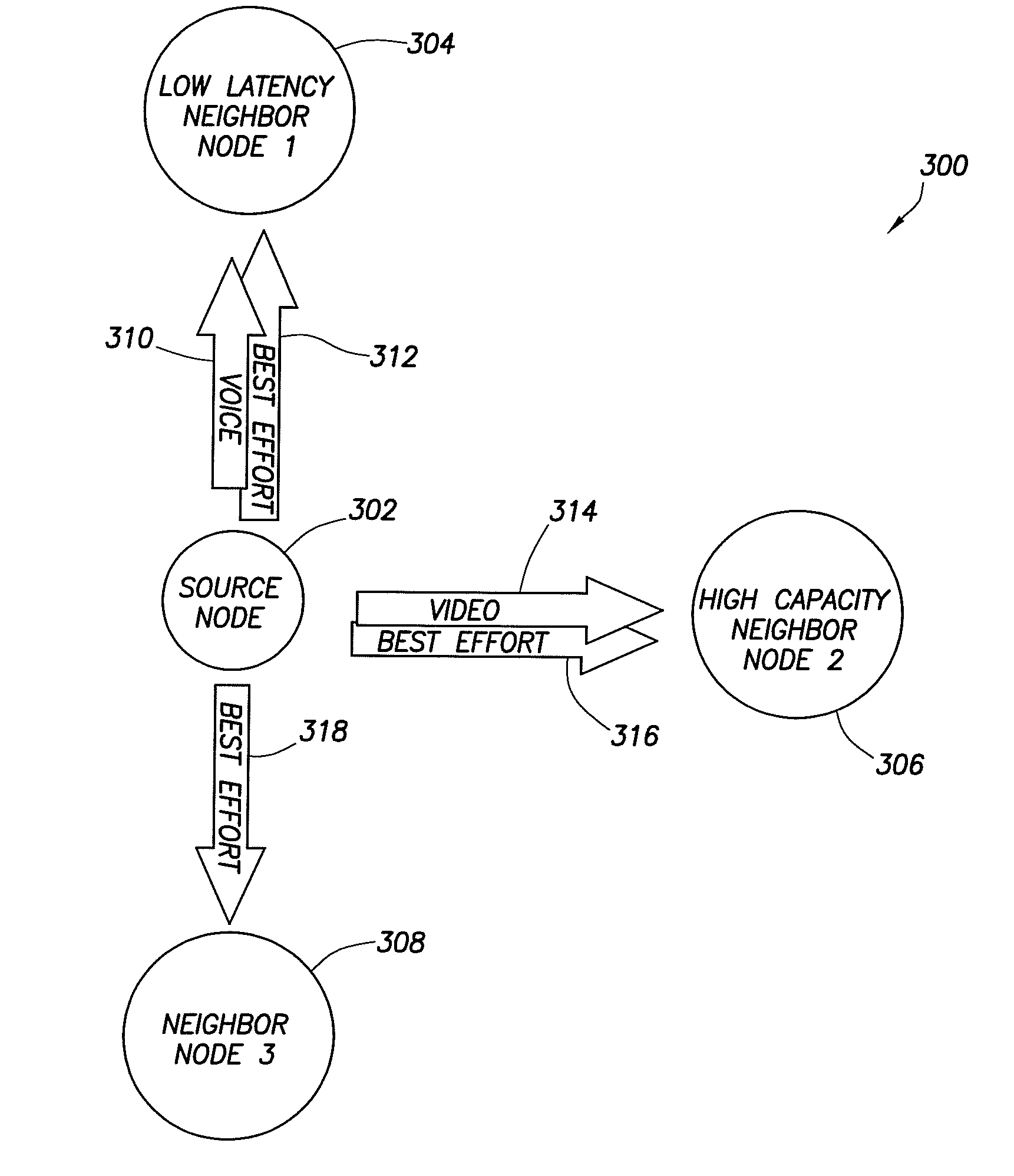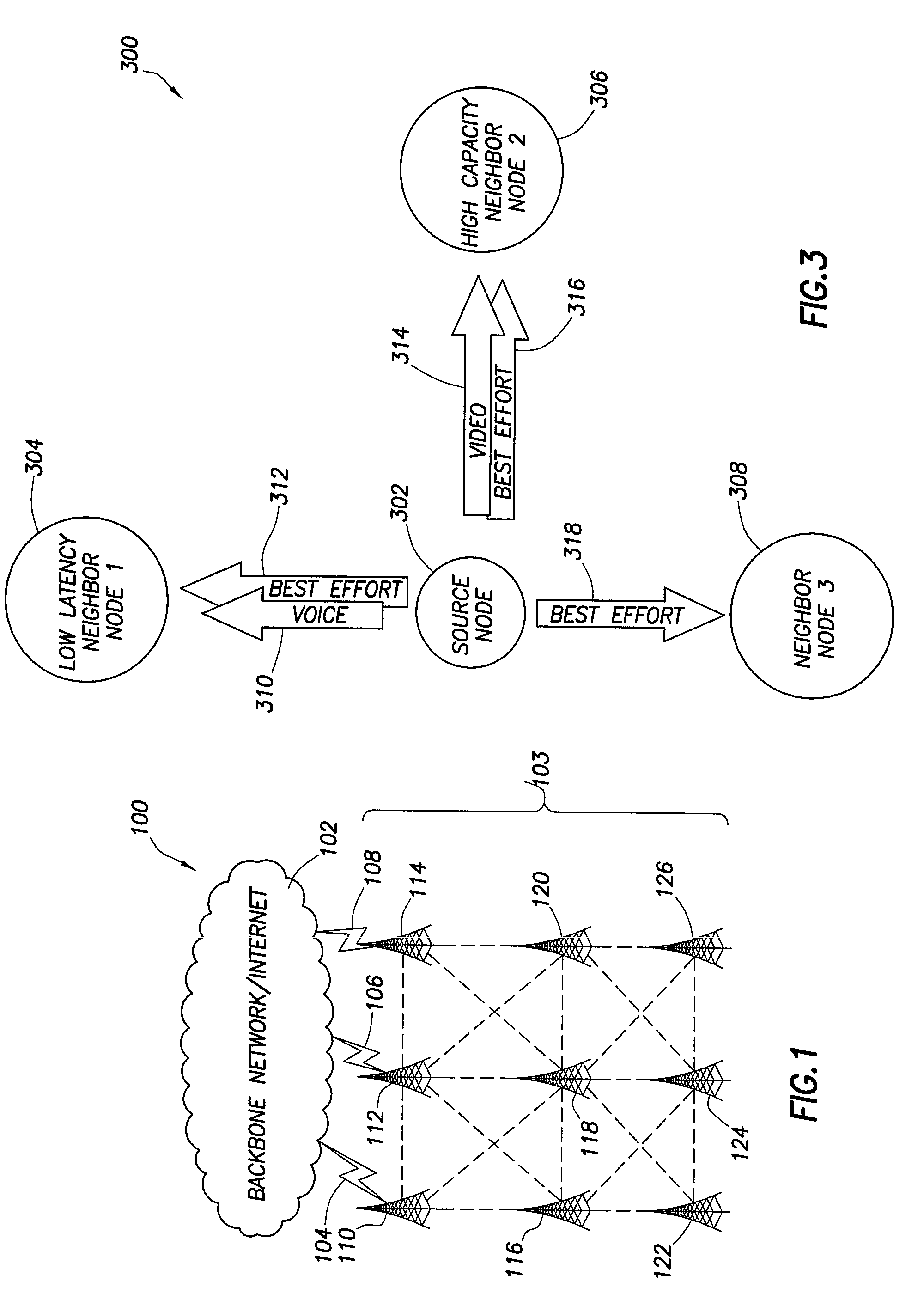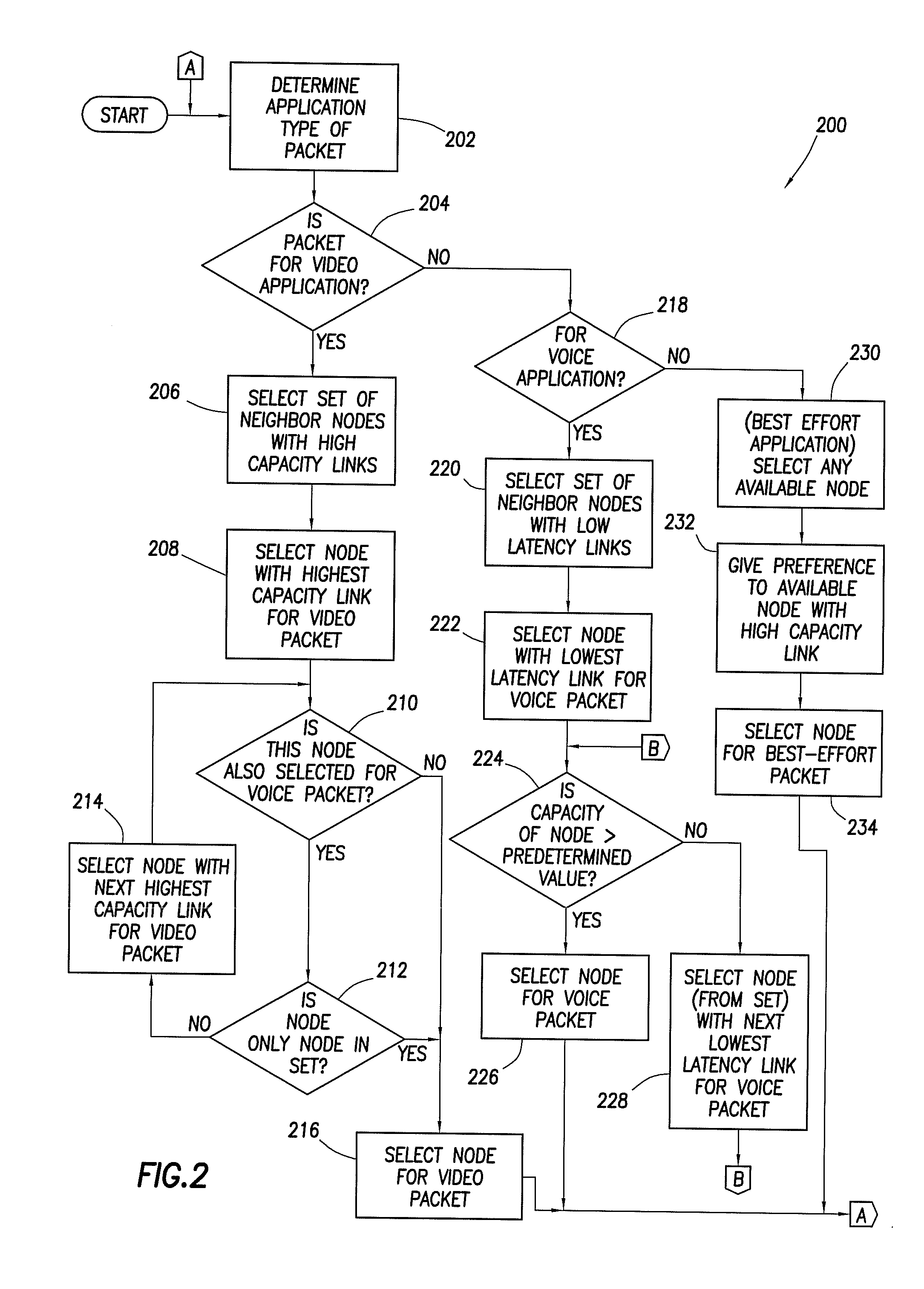Method for routing data in networks
a technology of routing data and network, applied in the field of telecommunications, can solve problems such as inefficient use of bandwidth
- Summary
- Abstract
- Description
- Claims
- Application Information
AI Technical Summary
Benefits of technology
Problems solved by technology
Method used
Image
Examples
Embodiment Construction
[0010]With reference now to the figures, FIG. 1 depicts a pictorial representation of an example telecommunication system 100, which can be used to implement an embodiment of the present invention. For this illustrative embodiment, system 100 includes a backbone network 102, and a wireless mesh network 103 connected to backbone network 102 by a plurality of wireless data communication connections 104, 106, 108. Mesh network 103 is composed of a plurality of telecommunication nodes 110 through 126. Backbone network 102 provides a pathway for exchanges of data between mesh network 103 and other networks or sub-networks. The data being exchanged can be packetized or single stream. For this illustrative embodiment, backbone network 102 provides a gateway that connects mesh network 103 to the Internet or other private network via one or more wired or wireless connections.
[0011]In mesh network 103, each of nodes 110 through 126 may function as a Base Station (BS), Subscriber Station (SS) ...
PUM
 Login to View More
Login to View More Abstract
Description
Claims
Application Information
 Login to View More
Login to View More - R&D
- Intellectual Property
- Life Sciences
- Materials
- Tech Scout
- Unparalleled Data Quality
- Higher Quality Content
- 60% Fewer Hallucinations
Browse by: Latest US Patents, China's latest patents, Technical Efficacy Thesaurus, Application Domain, Technology Topic, Popular Technical Reports.
© 2025 PatSnap. All rights reserved.Legal|Privacy policy|Modern Slavery Act Transparency Statement|Sitemap|About US| Contact US: help@patsnap.com



